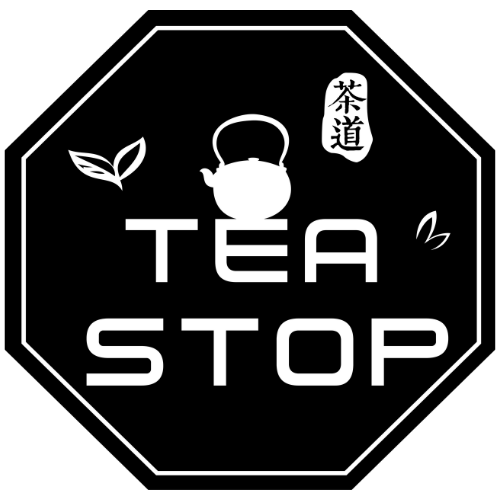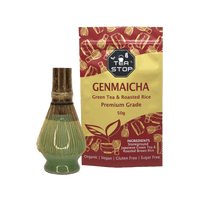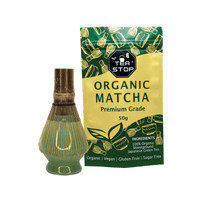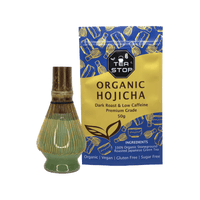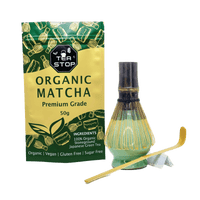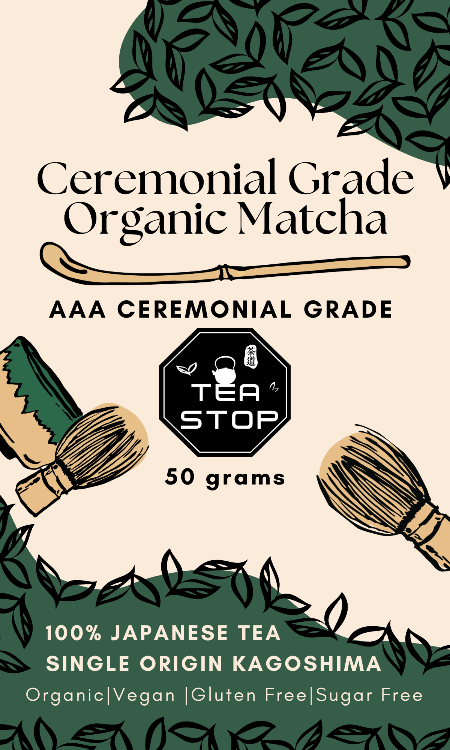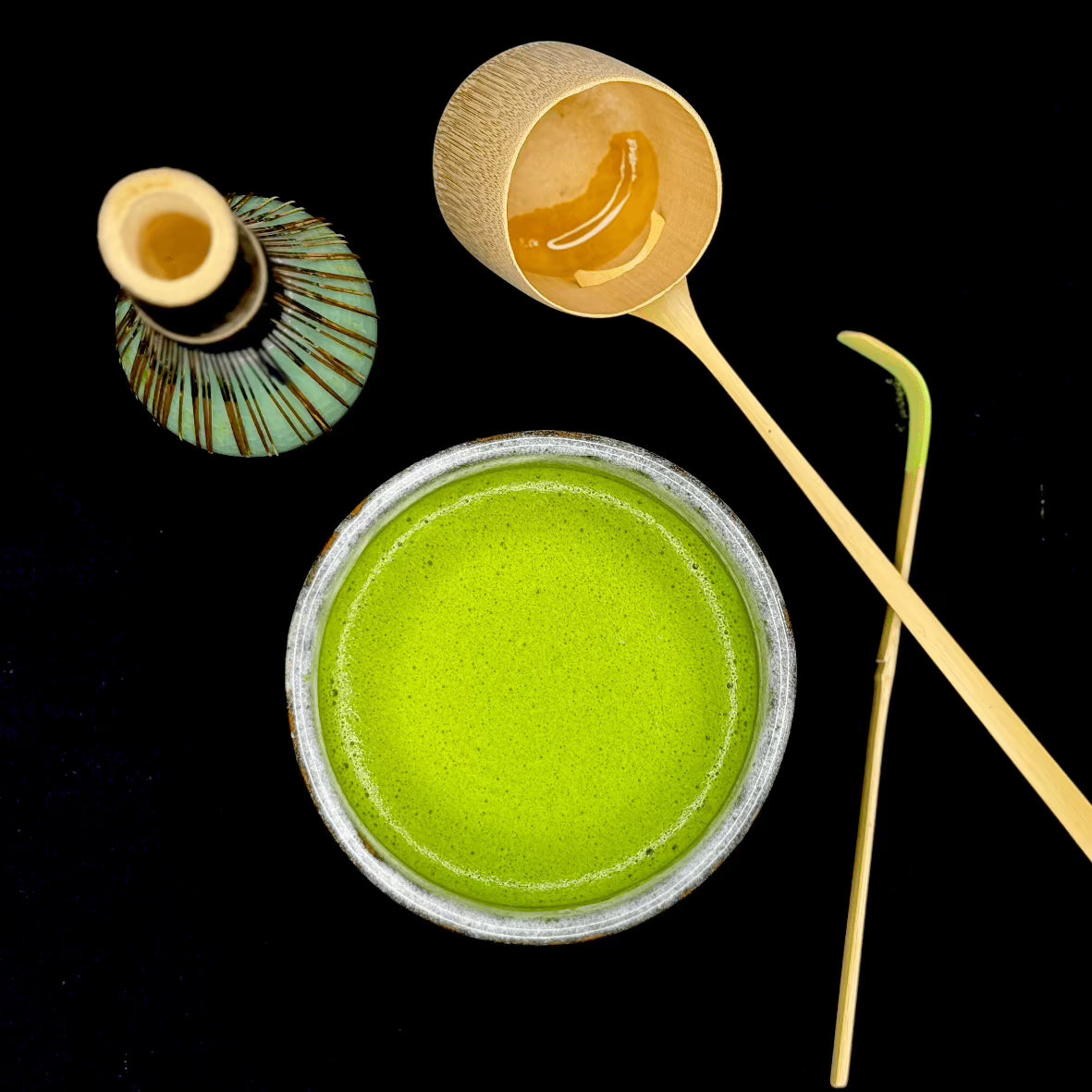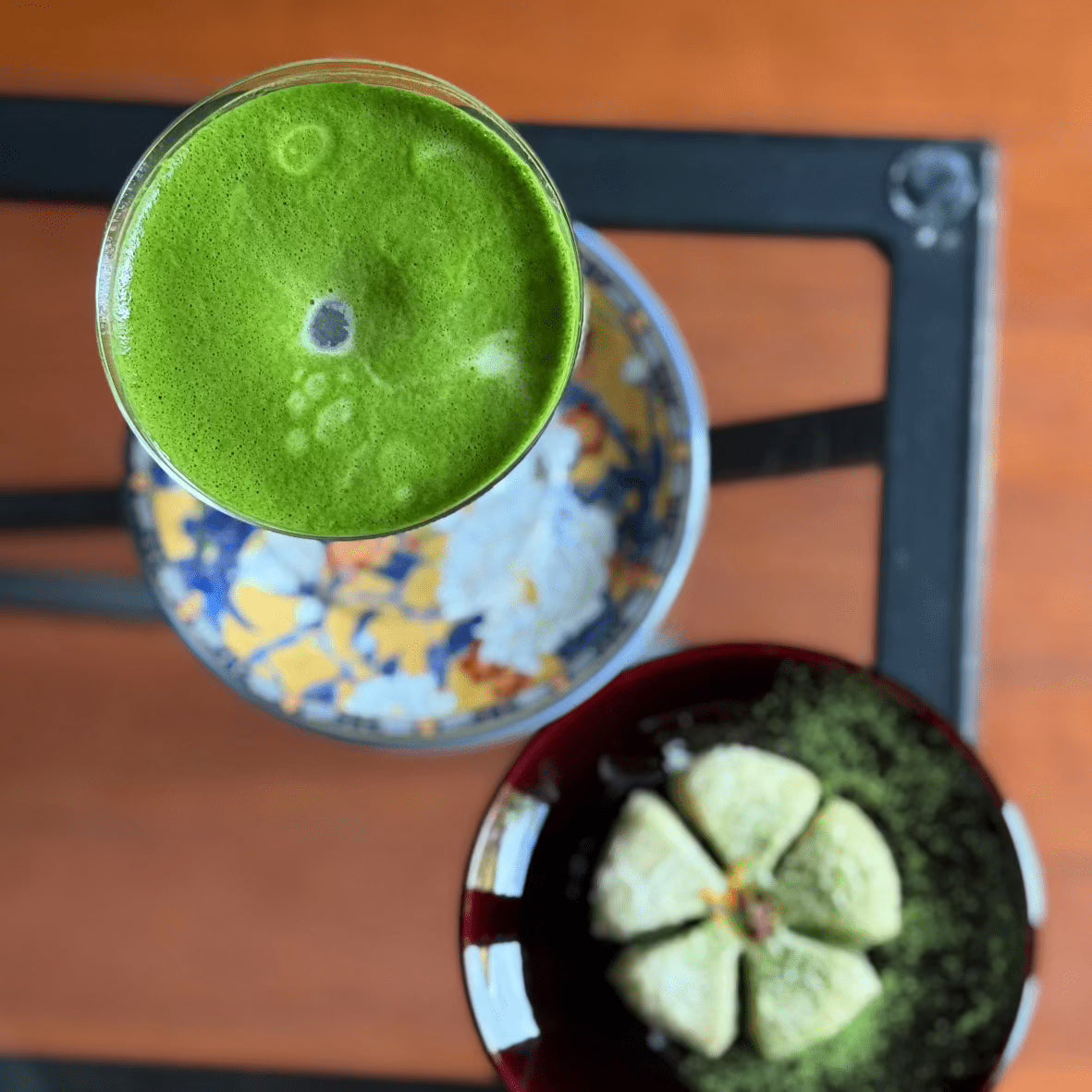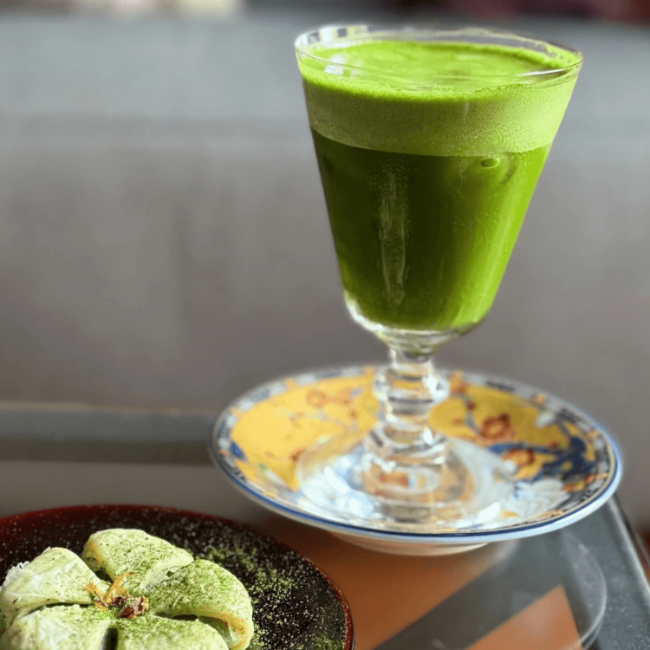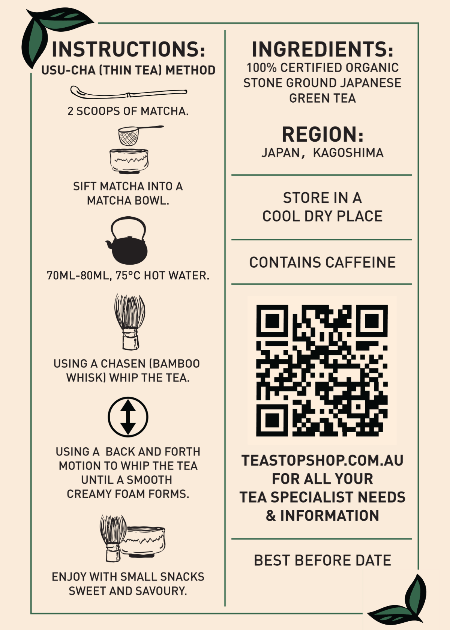
Hojicha 101: Introducing Roasted Green Tea Powder, Its Distinct Taste, and Japanese Tea Differences
Share
Hojicha, a delightful variant of roasted green tea, holds a special place in Japanese tea culture. Known for its inviting aroma and warm, toasty flavor profile, this roasted tea offers a unique experience distinct from other types of Japanese teas. Unlike traditional green teas, Hojicha boasts a lower caffeine content, making it an excellent choice for those seeking a soothing cup any time of day.
In this article, we will explore the fascinating world of Hojicha:
- Its origins and evolution
- The art of roasting that yields its characteristic taste
- The diverse range of flavors it offers
- How to brew both loose-leaf and powdered forms to perfection
- The health benefits that make Hojicha not only a delicious choice but also a beneficial one for well-being
As you embark on this flavorful journey with us, consider exploring our extensive collection of tea including Hojicha. We also offer various sets perfect for enjoying your favorite teas. To enhance your brewing experience, check out our selection of teaware and accessories.

Understanding Hojicha: A Deeper Dive into Roasted Green Tea
Hojicha, a distinctive type of Japanese green tea, is known for its unique roasting process that sets it apart from other green teas. Traditionally made by roasting Bancha, Sencha, or Kukicha leaves at high temperatures, this process imparts a rich, toasty flavor and a brownish hue. The result is a tea with a mild taste and lower caffeine content compared to its unroasted counterparts.
Types of Hojicha
Hojicha is available in various forms, catering to different preferences:
- Loose Leaf Hojicha: This traditional form allows for flexibility in brewing strength and caters to those who appreciate the ritual of steeping whole leaves.
- Powdered Hojicha: Often used in culinary applications or for making lattes, this form offers convenience and versatility.
History of Hojicha
The origins of Hojicha trace back to Kyoto in the 1920s. Faced with an oversupply of green tea leaves, Japanese tea merchants innovated by roasting them over charcoal. This practice not only created a new flavor profile but also appealed to those seeking a less bitter alternative to traditional green teas. Over time, Hojicha has evolved beyond its humble beginnings and expanded both domestically and internationally.
Navigating through the world of Hojicha reveals a complex journey from its historical roots in Kyoto to its modern-day variations embraced by tea lovers worldwide.
The Art of Roasting: How Hojicha Gets Its Unique Flavor
Hojicha's enchanting aroma and distinct flavor profile come from a special roasting method. This technique sets it apart from other green teas, where the focus is on preserving the vibrant green color and grassy taste. In contrast, Hojicha transforms roasting, which imparts its signature toasty and nutty notes.
Roasting Method for Hojicha:
- The process begins with selecting tea leaves that are typically late-harvested, such as Bancha or Kukicha.
- These leaves are then roasted at high temperatures in a porcelain pot over charcoal. This careful roasting reduces bitterness and caffeine while enhancing sweetness.
- The temperature and duration of roasting play pivotal roles in determining the final flavor. A brief roast may result in a lighter, more delicate taste, whereas extended roasting develops deeper, smokier undertones.
Tea Leaves Used in Hojicha:
While Bancha leaves are commonly used due to their lower price and availability, other varieties such as Sencha or Kukicha might also be roasted to create different Hojicha profiles. Each type of leaf contributes its unique character:
- Bancha: Offers a mellow and earthy base.
- Kukicha: Known for its twiggy texture and subtle sweetness.
- Sencha: Provides a richer and more nuanced taste.
This artful combination of specific techniques and choice of leaves gives Hojicha its beloved warmth and charm.
Exploring the Flavor Profile: What Makes Hojicha So Special?
Hojicha has a distinct flavor that sets it apart from other green teas. Its unique taste comes from the roasting process, which brings out a range of flavors that can be both subtle and bold. Whether you enjoy light and delicate notes or rich and smoky undertones, Hojicha offers something for everyone.
Diverse Flavor Notes in Hojicha
Hojicha can have different flavor profiles depending on the variety and how it is prepared. Here are some common flavor notes you might find:
- Light and Delicate: Some types of Hojicha have a gentle sweetness, similar to caramel or toasted nuts. These lighter versions are often preferred by those who enjoy milder flavors.
- Bold and Smoky: On the other hand, there are stronger varieties of Hojicha that have pronounced smoky or woody tastes. These robust versions provide a more intense and satisfying experience.
Factors Influencing Flavor Profiles
The flavors in Hojicha can be influenced by several factors:
- Roasting Time: The length of time the tea leaves are roasted can affect the taste. Longer roasting times usually result in deeper, smokier flavors, while shorter durations retain more of the tea's natural sweetness.
- Leaf Grade: The quality and type of leaves used also play a significant role. Higher-grade leaves like Bancha or Kukicha tend to produce smoother, more refined flavors.
By understanding these factors, you can enhance your enjoyment of Hojicha and discover your taste preferences within this extraordinary Japanese tea.
Brewing Perfection: Mastering the Art of Preparing Hojicha
Preparing Hojicha is an art that deserves attention to detail. Whether you are using loose-leaf or powdered forms, each method brings out unique aspects of this roasted tea's character. Here’s how to achieve perfection in your brewing techniques for Hojicha.
Loose Leaf Hojicha Preparation
- Measure the Tea: Use approximately 1 to 2 teaspoons of loose-leaf Hojicha per cup.
- Heat the Water: Heat water to around 80°C (176°F) to preserve the delicate flavors.
- Steep the Leaves: Pour the hot water over the leaves and let it steep for about 30 seconds to 1 minute, adjusting time-based on desired strength.
- Strain and Serve: Strain the tea into a cup and enjoy its soothing aroma and taste.
Tip: For a stronger flavor, you can reuse the leaves for a second infusion, increasing steeping time slightly.
Powdered Hojicha Preparation
- Measure the Powder: Use about 1 teaspoon of Hojicha powder per cup.
- Mix with Hot Water: Add a small amount of hot water (80°C/176°F) to create a paste, stirring thoroughly.
- Complete the Brew: Gradually add more hot water while continuously stirring until fully dissolved.
Tip: A bamboo whisk can enhance the texture and consistency of your brew, creating a creamy froth on top.
Both methods offer distinct experiences—loose leaf brings out nuanced complexities, while powdered form provides a quick, rich infusion perfect for modern lifestyles. Each sip offers a connection to tradition with every warm and inviting note.

Hojicha vs Other Japanese Teas: A Comparative Guide
Japanese teas are diverse and each variety has its unique characteristics that make it special. Hojicha, with its roasted flavor, is different from other popular types like Matcha, Sencha, and Bancha.
Appearance and Processing
Here's how Hojicha compares to other Japanese teas in terms of appearance and processing:
- Hojicha: Known for its reddish-brown color, which comes from roasting the leaves and changing their chlorophyll content.
- Matcha: Bright green powder made from young tea leaves that are finely ground.
- Sencha: Bright green tea made from whole leaves that are steamed to stop oxidation.
- Bancha: Duller green tea is harvested later in the season with larger, coarser leaves.
Flavor Profiles
Each type of Japanese tea has its distinct flavor profile:
- Hojicha: Offers a toasty, nutty flavor with hints of caramel, thanks to its roasting method. It has a mild and less bitter taste.
- Matcha: Rich and creamy with a full-bodied umami flavor, often described as grassy or vegetal.
-
Sencha vs Bancha Tasting Notes:
- Sencha: Fresh, light, and slightly sweet with a gentle bitterness.
- Bancha: Earthier and less refined, providing a more robust, rustic flavor.
Cultivation Methods
The way these teas are grown also affects their taste:
- Hojicha and Bancha are usually made from later harvests compared to Matcha and Sencha. The roasting process for Hojicha is different from the other teas.
- Matcha involves shading the tea plants before harvest to increase chlorophyll and amino acids.
- Sencha is grown under direct sunlight, which influences its fresh taste.
Each tea offers a different experience that reflects its processing and cultivation methods. Whether you prefer the warmth of Hojicha or the brightness of Matcha, there's a wide range of flavors to discover.
The Cultural Journey of Hojicha: From Tradition to Modernity
Hojicha, with its origins deeply rooted in Japanese tea culture, has long been a staple in households and tea ceremonies alike. Traditionally, Hojicha was appreciated for its mellow flavor and soothing qualities, often served as an evening tea due to its low caffeine content. This made it a popular choice for families and elderly individuals seeking a calming beverage.
Historically, Hojicha's role extended beyond mere refreshment. It represented a practical solution for utilizing older or less desirable leaves, transforming them through roasting into a delightful drink that embodied simplicity and warmth. This approach reflected the Japanese ethos of embracing imperfections and making the best use of available resources.
In modern times, contemporary trends involving Hojicha have seen this humble roasted tea gain both domestic and international acclaim. Its unique flavor profile has inspired culinary innovations such as Hojicha lattes, ice creams, and desserts that appeal to a wide range of palates. In Japan, trendy cafes and artisanal tea shops offer creative takes on traditional Hojicha preparations, while globally, its popularity continues to rise as more people discover its versatile characteristics.
The journey from tradition to modernity highlights Hojicha's adaptability and timeless appeal. As it evolves with changing tastes and trends, it remains a beloved component of Japanese tea culture that bridges the past with the present.
Embracing The World Of Hojicha: Explore Different Varieties And Flavors Available Through Suppliers Like Tea Stop Shop Australia!
Diving into the world of Hojicha offers a delightful exploration of flavors and aromas that captivate the senses. From its distinct toasty notes to its comforting warmth, Hojicha is a tea experience like no other. As you embark on this flavorful journey, consider the diverse varieties and flavors available through esteemed suppliers like Tea Stop Shop Australia.
Tea Stop Shop Australia provides a curated selection of premium Hojicha options, each promising a unique taste adventure:
- Loose Leaf Hojicha: Experience the traditional essence with its rich, roasted aroma.
- Powdered Hojicha: Enjoy versatility in preparation, perfect for lattes or baking.
Engage your palate with the nuanced flavors that span from light and delicate to bold and smoky. Whether you're a seasoned tea enthusiast or new to Japanese teas, exploring these offerings will undoubtedly enrich your appreciation for Hojicha's timeless appeal.
FAQs (Frequently Asked Questions)
What is Hojicha and how is it different from other green teas?
Hojicha is a type of roasted green tea that originates from Japan, particularly Kyoto. Its unique roasting process gives it a distinct toasty flavor profile and lower caffeine content compared to other green teas, making it a popular choice for those seeking a milder tea experience.
What types of Hojicha are available?
Hojicha comes in various forms, including loose-leaf and powdered varieties. Each type offers a different brewing experience and flavor profile, allowing tea enthusiasts to choose based on their preferences.
How is Hojicha roasted and what leaves are used?
The roasting method for Hojicha involves high temperatures that caramelize the sugars in the tea leaves, resulting in its signature taste. Commonly used leaves include bancha or sencha, which contribute to the tea's rich flavor.
What flavors can I expect from Hojicha?
Hojicha features a diverse range of flavors that can vary from light and delicate to bold and smoky. The specific taste characteristics depend on factors such as roasting time and the grade of the leaves used.
How do I brew Hojicha properly?
To brew Hojicha, you can follow step-by-step instructions for both loose-leaf and powdered forms. Key tips include using the right water temperature (around 80°C or 176°F) and steeping time (1-2 minutes) to enhance the flavor.
What are some traditional and modern uses of Hojicha in Japan?
Traditionally, Hojicha has been enjoyed as an everyday beverage in Japanese households. Today, its popularity has expanded internationally, with contemporary trends incorporating Hojicha into various culinary creations such as desserts and lattes.
